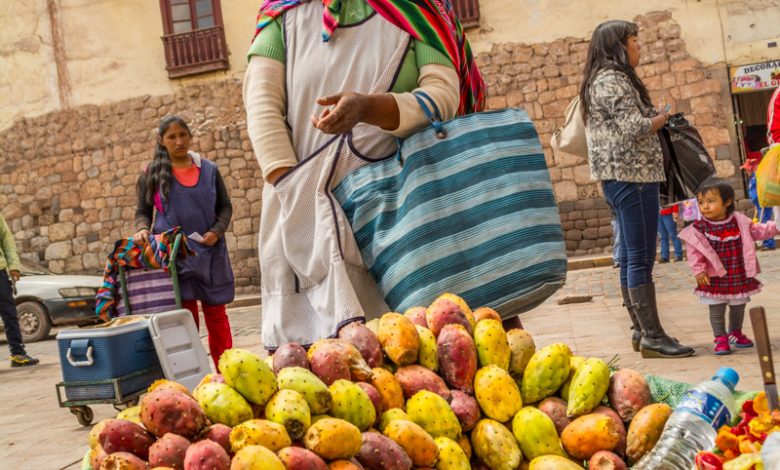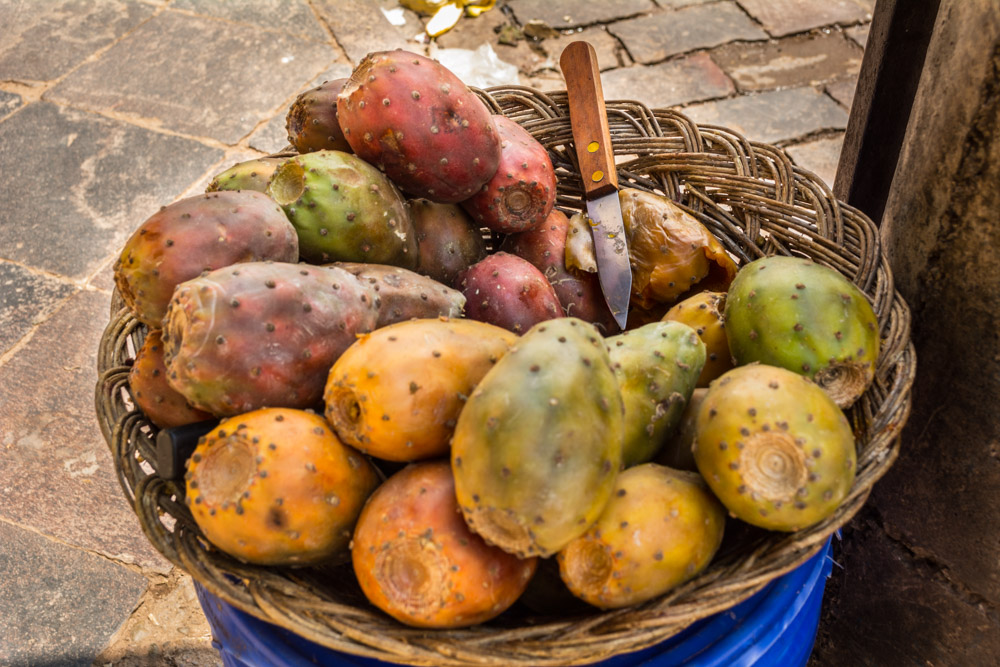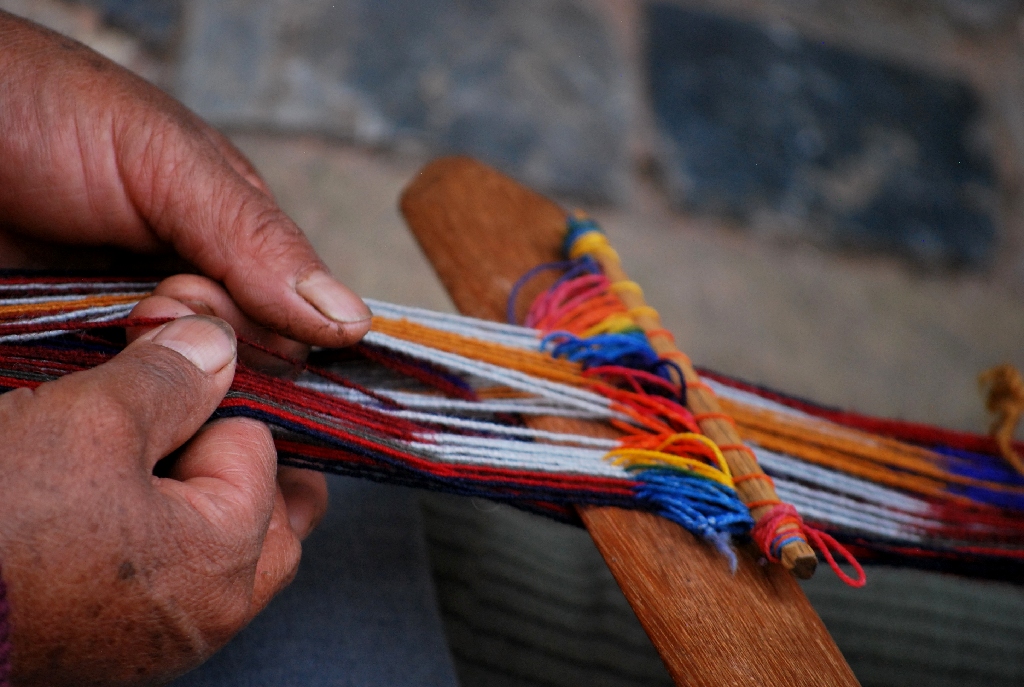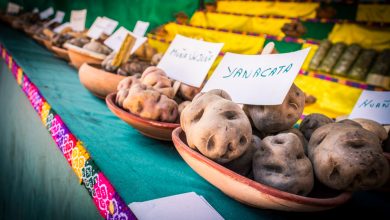Once Past the Thorns, Cactus Fruit Delight and Refresh


Our marvelous city of Cusco is living refreshing times. With the unexpected company of rainfall, our city shines clean and bright. Our hills and valleys are radiant and the house garden colorful. After the rain performs its function, watering our beautiful earth, a fresh air appears, pure and natural. The crops in the fields grow and, given that, many different foods arrive in Cusco’s markets. Fruit and vegetables and others stimulate our palate and senses.
During these months the fruit of the moment is the tuna, or cactus pear. It is a rich fruit in different colors. They go from light green to orange and reddish. It comes in an oval shape and has a thick skin with lots of thorns. There are different sizes, small, medium, and large. While it is delicious inside you need to be careful because the outside can be dangerous if you do not know how to peel it.
The cactus plants that produce the tuna are usually about a meter and a half to two meters in size. Their fruit comes to the city in large quantities from Tacna, Abancay, Limatambo and other places. However, the major zone for their growth is Ayacucho. Tuna fruit appear in all our markets and also is found on many street corners. During these first months of the year, the tuna vendors are very active in offering this fruit to us since it is constantly arriving at our wholesale markets.

Given each day’s immense heat, the cactus pear is a good option to refresh your body. The color of the fruit is unit as important as the flavor, which is sweet and refreshing. When you take your first bite, you feel a delicious and juicy flavor that spreads over your palate and takes you to a unique place filled with sweetness.
The almost invisible tiny thorns on the fruit’s peel are an obstacle for many people. Whenever you peel it you can end up with some of these thorns in you fingers or hand and they make you feel just a bit uncomfortable. The vendors, on the other hand, are well practiced and can quickly peel the fruit. In just an instant they can peel five or six without suffering any discomfort from thorns in their fingers.

The price of the fruit depends on its size. If the fruit is small you can obtain four for one sol. If they are of regular size then the price is three for one sol. If they are large then each fruit is fifty cents.

One interesting fact that I almost forgot to mention: the cactus plant that produces this fruit is also where the cochinilla (cochineal) grow. These are insects that produce a bright red dye. It is used as natural coloring for weaving, gelatins, lipstick, and more.




